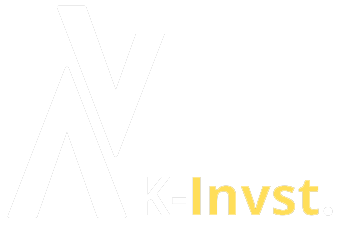Key Performance Indicators (KPIs) are essential tools for measuring the success of transformation initiatives. They provide a quantifiable measure of performance and help organizations track progress towards their strategic goals. Here’s a guide on the key KPIs for measuring transformation success:
- Financial Performance Metrics
Financial performance metrics are critical indicators of the success of transformation initiatives. These metrics help assess the financial health and profitability of the organization.
- Revenue Growth: Measures the increase in revenue over a specific period. It indicates the effectiveness of transformation initiatives in driving sales and market expansion.
- Cost Savings: Tracks the reduction in operational costs resulting from transformation efforts, such as process optimization, automation, and efficiency improvements.
- Return on Investment (ROI): Calculates the financial return generated by the transformation initiatives relative to the investment made. A positive ROI indicates successful transformation.
- Operational Efficiency Metrics
Operational efficiency metrics assess the impact of transformation on the organization’s processes and productivity.
- Process Cycle Time: Measures the time taken to complete a specific process from start to finish. A reduction in cycle time indicates improved efficiency and faster execution.
- Productivity Rate: Evaluates the output produced per unit of input, such as employee productivity or machine efficiency. Increased productivity signifies successful transformation.
- Error Rate: Tracks the frequency of errors or defects in processes. A lower error rate indicates improved quality and operational excellence.
- Customer Experience Metrics
Customer experience metrics evaluate the impact of transformation initiatives on customer satisfaction and loyalty.
- Net Promoter Score (NPS): Measures customer loyalty and likelihood to recommend the company’s products or services. A higher NPS indicates improved customer satisfaction.
- Customer Satisfaction Score (CSAT): Assesses customer satisfaction levels through surveys and feedback. A higher CSAT score reflects positive customer experiences.
- Customer Retention Rate: Tracks the percentage of customers who continue to do business with the company over a specific period. A higher retention rate indicates successful customer engagement and loyalty.
- Innovation and Growth Metrics
Innovation and growth metrics measure the organization’s ability to innovate and expand its market presence.
- New Product Launches: Counts the number of new products or services introduced as a result of transformation initiatives. Increased launches indicate successful innovation.
- Market Share: Evaluates the organization’s share of the market relative to competitors. An increase in market share signifies successful market expansion and competitiveness.
- R&D Investment: Tracks the investment in research and development activities. Higher R&D investment reflects a commitment to innovation and long-term growth.
- Employee Engagement and Development Metrics
Employee engagement and development metrics assess the impact of transformation on the workforce.
- Employee Satisfaction Score: Measures employee satisfaction levels through surveys and feedback. A higher satisfaction score indicates a positive work environment and successful transformation.
- Employee Retention Rate: Tracks the percentage of employees who remain with the organization over a specific period. A higher retention rate signifies employee engagement and satisfaction.
- Training and Development Hours: Counts the number of hours employees spend on training and development activities. Increased training hours reflect a focus on skill enhancement and career growth.
- Digital Transformation Metrics
Digital transformation metrics evaluate the effectiveness of technology adoption and digital initiatives.
- Digital Adoption Rate: Measures the percentage of processes or activities that have been digitized. A higher adoption rate indicates successful digital transformation.
- System Uptime and Reliability: Tracks the availability and reliability of digital systems and platforms. Higher uptime and reliability signify effective technology implementation.
- User Experience (UX) Metrics: Assesses the usability and user satisfaction of digital platforms through surveys and feedback. Positive UX metrics reflect successful digital transformation.
Conclusion
KPIs are essential for measuring the success of transformation initiatives. By tracking financial performance, operational efficiency, customer experience, innovation and growth, employee engagement, and digital transformation metrics, organizations can gain valuable insights into their progress and make data-driven decisions. Regularly monitoring and analyzing these KPIs ensures that transformation efforts are on track and aligned with strategic goals, driving long-term success and competitive advantage.
